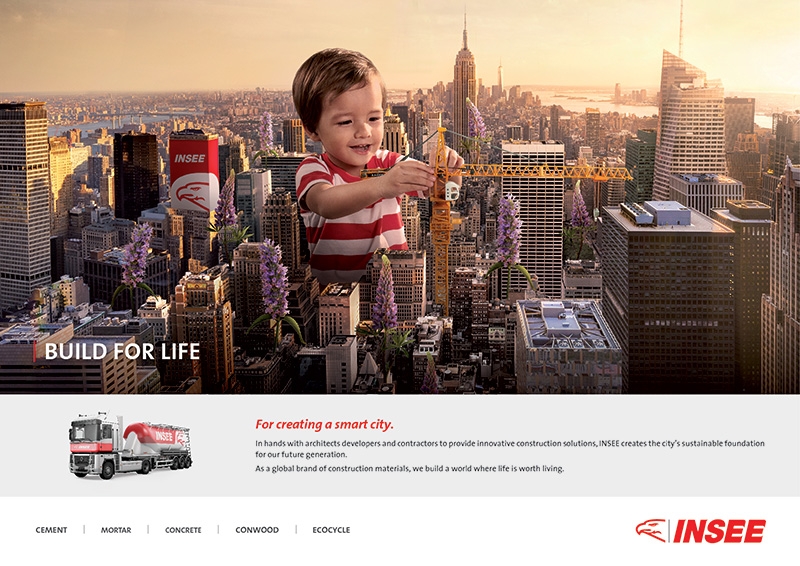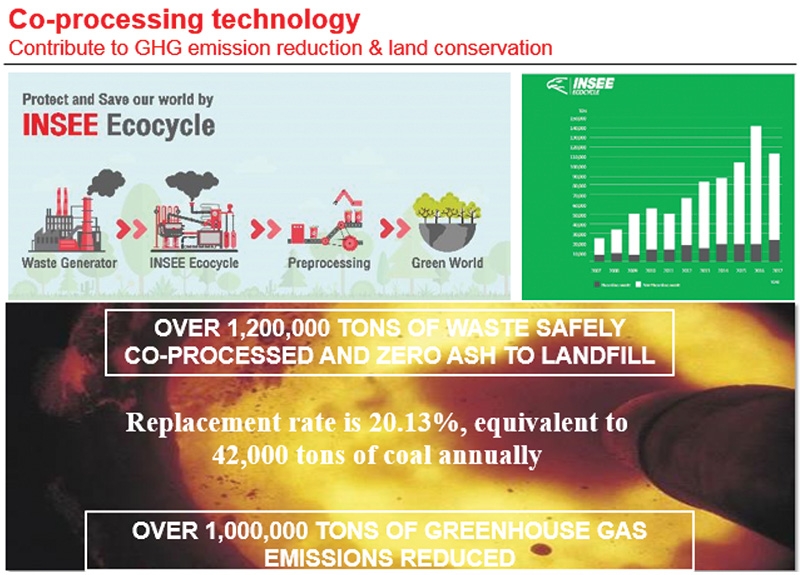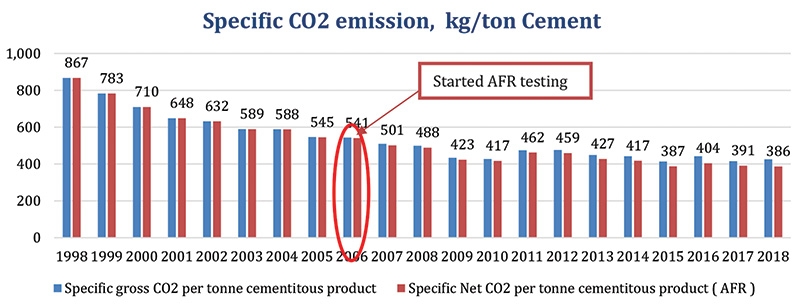
Activity throughout the life cycle of materials, from mining, manufacturing, and transportation, to usage and disposal always has an impact on the environment. Exploitation can even destroy the ecosystem, pollute the environment, and consume energy and resources. Therefore, the exploitation of new resources needs to be limited.
In Vietnam, the demand for construction materials is increasing, but this development will not be sustainable as it depends too much on the exploitation of new resources. Moreover, the majority of exploitation is carried out using outdated technologies and techniques, thus wasting resources and causing environmental pollution. As a result, the reduction of the use of materials produced from new resources, the promotion of sustainable materials that use less energy, and the reduction of construction waste are necessary goals for Vietnam on the path towards sustainable development.
INSEE Vietnam wishes to contribute to the country’s national development by continuously providing breakthrough solutions to customers while improving the public’s quality of life, protecting the environment, investing in people, and promoting sustainable construction trends. INSEE is committed to sustainable development throughout its value chain, reflected in the brand philosophy of “Build For Life”.
The group has pursued a sustainable development strategy since its establishment in Vietnam 23 years ago and is utilising advanced techniques and technologies to produce environmentally-friendly cement and concrete. One of the groundbreaking initiatives is to reduce the clinker factor by using different materials such as pozzolana, limestone, and steel slag, as well as alternative fuels such as biogas or energy derived from industrial waste. Proper adjustment and maintenance of the system is also considered to be the best way of increasing energy efficiency.
Towards sustainability
The Waste Heat Recovery Power Plant allows reduction of electricity consumption by 25 per cent, generating 6.3 megawatt. Meanwhile, co-processing technology (replacing coal with alternative waste fuel) is a sustainable waste treatment solution: over 1.2 million tonnes of waste have been safely co-processed so far by INSEE and zero ashes were sent to landfill, equivalent of over 1.2 million tonnes of greenhouse gas emissions reduced. With this technology, INSEE has been entrusted by international brands such as Nestlé or adidas for handling their industrial waste safely.
These initiatives resulted in low-emission cement products, only at 386 kilogramme of carbon dioxide (CO2) emissions per tonne of cement produced, compared to the industry average of 750kg.
INSEE products have been recognised by domestic and foreign organisations. All INSEE products are in the Green Database of Vietnam Green Building Council as well as being the first cement product certified as Green Label products from Singapore Green Building Council, meeting the rigorous standards since exploitation phase, managing natural resources, energy, emissions, water, and waste, throughout the production process to the final product. Green label products are suitable for green building standards of GreenMark (Singapore), Lotus (Vietnam), LEED (the US), and EDGE (IFC-World Bank).
Solving urban flooding
Vietnam is a country subjected to many impacts due to climate change, especially storms and floods in the central provinces and Mekong Delta. When raining, the water flows down to the lowest area causing flooding, before being discharged through sewage to the sea. The paradox occurs when the usable groundwater reserve is severely depleted, and the city is inundated. The depletion of groundwater reserve also causes urban subsidence.
Sustainable construction solutions, as well as environmentally-friendly materials, have been developed and put into use to minimise the harmful effects of humans on the environment. With a special structure, Hydropave, a permeable beton product from INSEE Vietnam, has a high porosity of 20-30 per cent, helping the rainwater penetrate quickly underground. It filters through the natural geological layers and adds to underground water reserves, thoroughly solving all of the aforementioned problems. In addition, Hydropave also helps reduce the surface temperature compared to traditional concrete, creating cooler space for cities.


Conservation of forests
The concept of using natural wood to bring luxury to users is still very popular. The more beautiful and durable the wood, the higher the value, which leads to natural wood in furnishing the house to be quite expensive. However, the exploitation of natural wood today is a serious problem not only in Vietnam but many countries around the world.
In addition, the tropical climate in Vietnam easily affects the quality of wood in terms of low moisture, warping, and termites for instance, which will cause damage to the furniture. Inspired by the concept of sustainable construction, CONWOOD is developed as an environmentally-friendly wood substitute product that allows people to have a better quality of life while maintaining harmony with the environment.
Manufactured with the highest quality cellulose fibre and Portland cement, CONWOOD offers the benefits of both lightweight concrete and wood in one package. It has high durability and is anti-termite and non-flammable, but still retains the look and feel of natural wood while solving the problem of indiscriminate exploitation of forest resources.
INSEE Vietnam is the pioneer in bringing the CONWOOD product to Vietnamese consumers, together with several other manufactures.
INSEE Vietnam has always been known as a world-class supplier of materials, playing an important role in the country’s economic development. Combining sustainability and creativity, INSEE aims to be perfect in all of its activities, products, and services to meet all expectations from stakeholders. INSEE believes that the world would be a better place if everything we build could always make life worth living.
By Nguyen Thanh Dung - Sustainable construction manager, SiamCityCement Vietnam Co., Ltd.

















